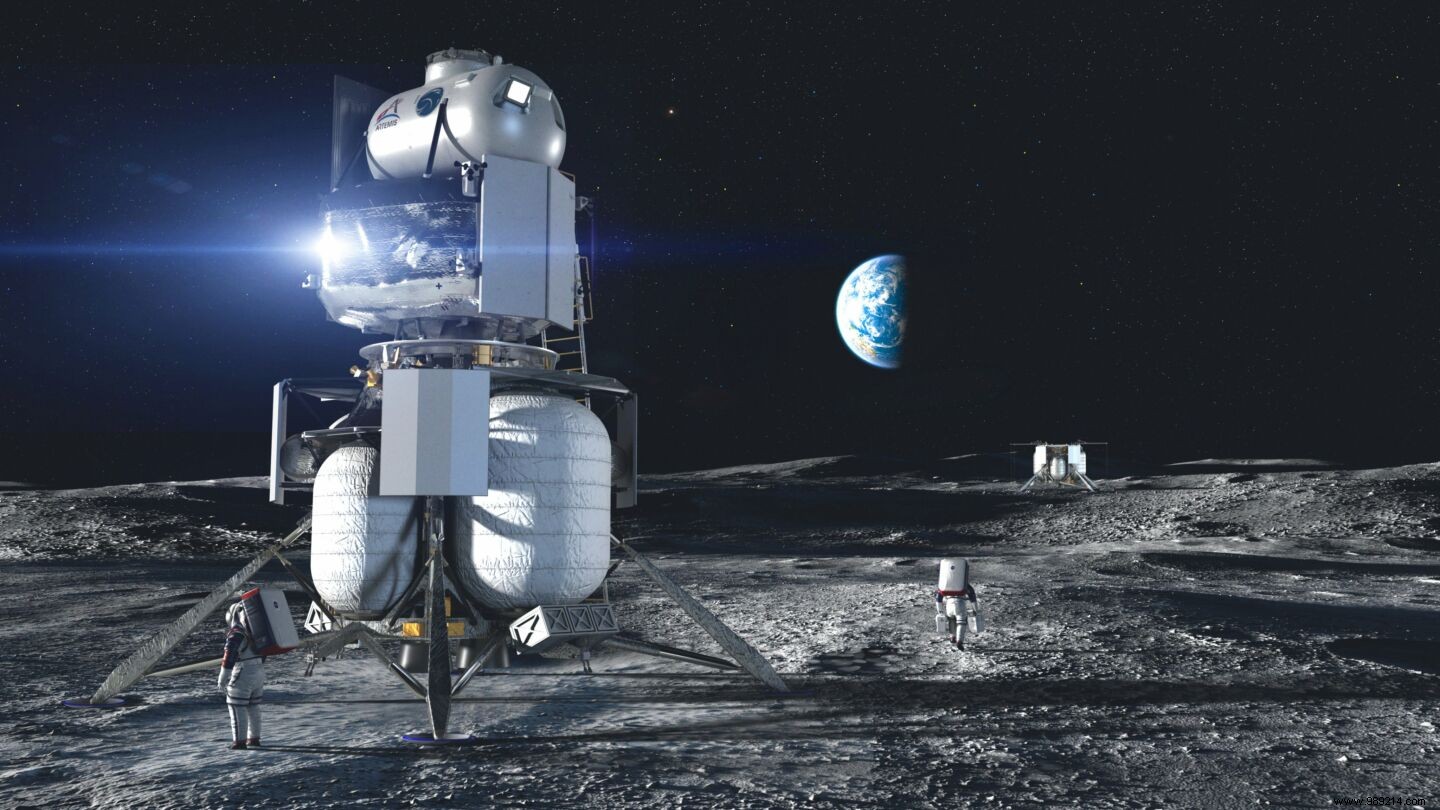Blue Origin, Jeff Bezos' spaceflight company, has just offered NASA a full-scale model of its future lander. The project could be selected by the space agency to transport astronauts to the Moon in 2024.
Last May NASA announced that it had awarded three contracts to begin development of lunar landing systems that will allow the next man and woman to land on the Moon in 2024 as part of the Artemis program . The companies chosen are:Blue Origin, Dynetics and SpaceX.
"With these three contractors, I believe NASA has everything it needs to successfully complete its 2024 lunar landing , had declared Jim Bridenstine, administrator of the agency.We are delighted. These companies not only bring unique designs, they also offer unique stories and philosophies to each of their development “.
From then on, all of them got down to designing and developing prototype landers to present to officials of the American agency. And Blue Origin obviously wasted no time. Indeed, a first full-scale model has just been delivered to NASA's Johnson Space Center in Houston. It will remain in these premises until the beginning of the year.
"Testing this engineering model is a step towards realizing this historic mission , said Brent Sherwood, vice president of advanced development programs for the company. Benefiting from NASA's expertise and feedback at this early stage will allow us to develop a secure commercial system that will meet the agency's needs “.

On the structure side, this 12 meters high is broken down into three parts. A descent stage will transport the astronauts to the lunar surface, powered by a transfer module . A ascent vehicle will take care, on the contrary, of extracting them from the surface to bring them back to the Orion capsule, of which Lockheed Martin is the main contractor.
As a reminder, astronauts will launch from Earth aboard this capsule, capped atop NASA's massive Space Launch System rocket.

As part of this program, Blue Origin was granted the sum of579 million dollars . The Dynetics team benefits from an envelope of 253 million dollars, and SpaceX with a budget of 135 million dollars. Note that these amounts do not reflect any preference in the eyes of the American agency, but are based on the sums requested by each of the three teams to develop their services.
For its part, the Dynetics company seems well on its way to developing a module very similar to those of the Apollo missions, with a cabin close to the ground. As for SpaceX, the company intends to rely on its reusable "Starship" rocket - of which a new prototype flew away a few days ago - to go back and forth between the Earth and the Moon.
Once all these projects have been studied, NASA will probably choose only one. At least, within the framework of the first lunar missions to come.
As for the idea of reaching the Moon in 2024, NASA remains hopeful, but remains aware that the objective seems very ambitious . In the meantime, the agency will have to take several important steps, starting with the launch of Artemis 1, postponed from 2020 to 2021. For this flight, the SLS launcher must leave with the Orion capsule for an unmanned mission around the Moon. The rest of the schedule will depend on the holding of this mission.